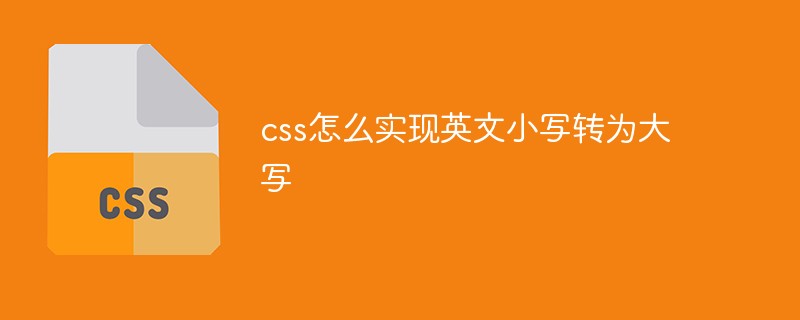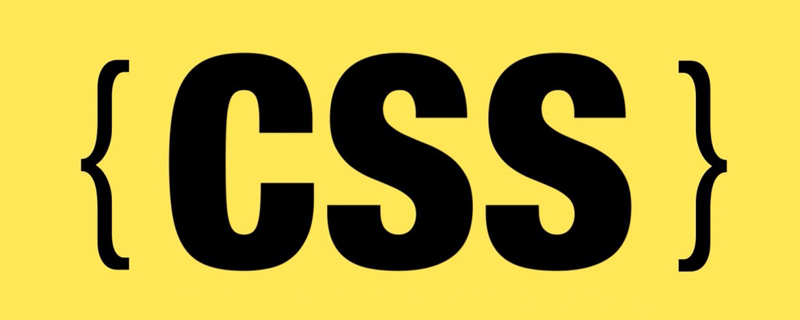This article will introduce to you the counting functions in CSS: counter(), counters(). It has certain reference value. Friends in need can refer to it. I hope it will be helpful to everyone.

[Recommended tutorial: CSS video tutorial]
counter()
counter returns a representative counter current A string of values. Receives two parameters, a name and a counting style. counter(name,styleName),name is case-sensitive and serves as the name identifier representing the current counter. The styleName parameter is optional and represents the type of incrementing numbers or letters. The acceptable parameters are the types supported by list-style-type. Commonly used ones are the following:
- disc (solid dot)
- circle (hollow dot)
- square (solid square)
- decimal (Arabic numerals 12345...)
- lower-roman (Roman numerals i, ii, iii...)
- upper-roman (Roman numerals I, II, III, IV. ..)
- simp-chinese-informal (Chinese counting one, two, three, ...ninety-nine,)
- simp-chinese-formal (Chinese traditional one, two, three四五...)
- lower-latin (lower case abcd...)
- upper-latin (upper case ABCD....)
- ...
For more information and compatibility, seeMDN list-style-type
##There are two other attribute values related to the counter’s interests:
- counter-reset
- counter-increment
counter-reset,counter -increment
counter-reset is used to reset the CSS counter. The reset content includes the name and initial number. Example:
<div></div>
.demo1 {
counter-reset: counter1 123;
}
.demo1:before {
content: counter(counter1,simp-chinese-formal);
}Effect

counter-increment is used to represent the increment interval of the counter, see the code
<p>
<section></section>
<section></section>
<section></section>
<section></section>
</p>
.demo2{
counter-reset: counter2 1;
/* counter-increment: counter2 -2; */
}
section:before {
content: counter(counter2,decimal);
counter-increment: counter2 2;
}Effect


counters(counterName,string,styleName), receives 3 parameters counterName, string, styleName. The third parameter is optional Chosen. Look at the chestnut
<p>
</p><p>
内容一
</p><p>
</p><p>子内容一</p>
<p>子内容二</p>
<p>子内容三</p>
<p>
内容二
</p><p>
</p><p>
子内容一
</p><p>
</p><p>子子内容一</p>
<p>子子内容二</p>
<p></p>
<p></p>
<p></p>
<p>
内容三
</p>
.father {
counter-reset: counter3;
padding-left: 30px;
}
.son:before {
content: counters(counter3, "-")'.';
counter-increment: counter3;
}effect


Programming Video! !
The above is the detailed content of A closer look at the count function in CSS. For more information, please follow other related articles on the PHP Chinese website!
 css ul标签怎么去掉圆点Apr 25, 2022 pm 05:55 PM
css ul标签怎么去掉圆点Apr 25, 2022 pm 05:55 PM在css中,可用list-style-type属性来去掉ul的圆点标记,语法为“ul{list-style-type:none}”;list-style-type属性可设置列表项标记的类型,当值为“none”可不定义标记,也可去除已有标记。
 css与xml的区别是什么Apr 24, 2022 am 11:21 AM
css与xml的区别是什么Apr 24, 2022 am 11:21 AM区别是:css是层叠样式表单,是将样式信息与网页内容分离的一种标记语言,主要用来设计网页的样式,还可以对网页各元素进行格式化;xml是可扩展标记语言,是一种数据存储语言,用于使用简单的标记描述数据,将文档分成许多部件并对这些部件加以标识。
 css3怎么实现鼠标隐藏效果Apr 27, 2022 pm 05:20 PM
css3怎么实现鼠标隐藏效果Apr 27, 2022 pm 05:20 PM在css中,可以利用cursor属性实现鼠标隐藏效果,该属性用于定义鼠标指针放在一个元素边界范围内时所用的光标形状,当属性值设置为none时,就可以实现鼠标隐藏效果,语法为“元素{cursor:none}”。
 css怎么设置i不是斜体Apr 20, 2022 am 10:36 AM
css怎么设置i不是斜体Apr 20, 2022 am 10:36 AM在css中,可以利用“font-style”属性设置i元素不是斜体样式,该属性用于指定文本的字体样式,当属性值设置为“normal”时,会显示元素的标准字体样式,语法为“i元素{font-style:normal}”。
 rtl在css是什么意思Apr 24, 2022 am 11:07 AM
rtl在css是什么意思Apr 24, 2022 am 11:07 AM在css中,rtl是“right-to-left”的缩写,是从右往左的意思,指的是内联内容从右往左依次排布,是direction属性的一个属性值;该属性规定了文本的方向和书写方向,语法为“元素{direction:rtl}”。
 css怎么实现英文小写转为大写Apr 25, 2022 pm 06:35 PM
css怎么实现英文小写转为大写Apr 25, 2022 pm 06:35 PM转换方法:1、给英文元素添加“text-transform: uppercase;”样式,可将所有的英文字母都变成大写;2、给英文元素添加“text-transform:capitalize;”样式,可将英文文本中每个单词的首字母变为大写。
 怎么设置rotate在css3的旋转中心点Apr 24, 2022 am 10:50 AM
怎么设置rotate在css3的旋转中心点Apr 24, 2022 am 10:50 AM在css3中,可以用“transform-origin”属性设置rotate的旋转中心点,该属性可更改转换元素的位置,第一个参数设置x轴的旋转位置,第二个参数设置y轴旋转位置,语法为“transform-origin:x轴位置 y轴位置”。


Hot AI Tools

Undresser.AI Undress
AI-powered app for creating realistic nude photos

AI Clothes Remover
Online AI tool for removing clothes from photos.

Undress AI Tool
Undress images for free

Clothoff.io
AI clothes remover

AI Hentai Generator
Generate AI Hentai for free.

Hot Article

Hot Tools

Dreamweaver CS6
Visual web development tools

ZendStudio 13.5.1 Mac
Powerful PHP integrated development environment

MinGW - Minimalist GNU for Windows
This project is in the process of being migrated to osdn.net/projects/mingw, you can continue to follow us there. MinGW: A native Windows port of the GNU Compiler Collection (GCC), freely distributable import libraries and header files for building native Windows applications; includes extensions to the MSVC runtime to support C99 functionality. All MinGW software can run on 64-bit Windows platforms.

VSCode Windows 64-bit Download
A free and powerful IDE editor launched by Microsoft

Dreamweaver Mac version
Visual web development tools








